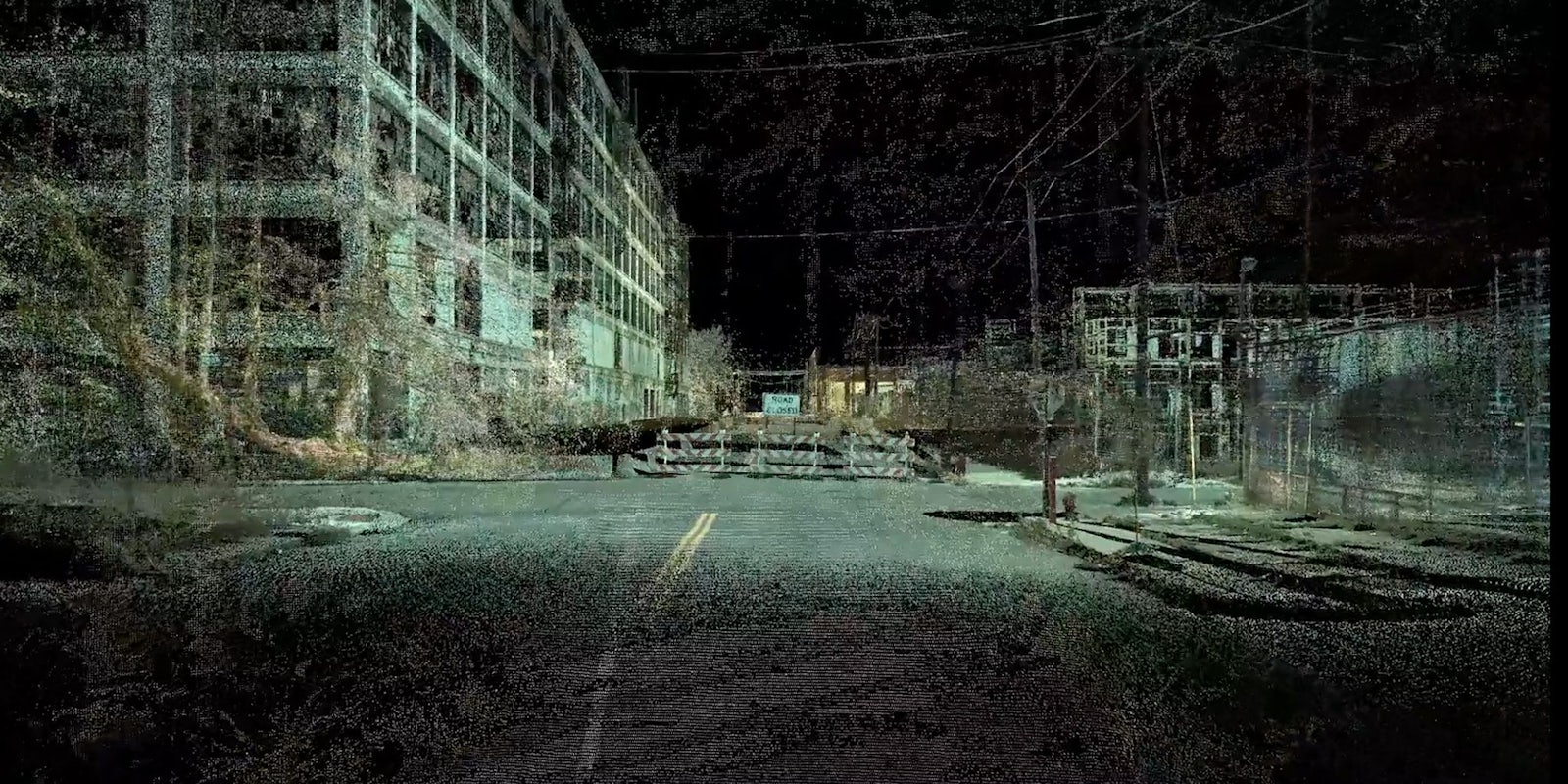Director Liam Young just debuted the trailer for the first narrative fiction film shot entirely with laser scanners, and it’s dark, disturbing look at the not-too-distant future.
Where the City Can’t See is set in the Chinese-owned and controlled Detroit Economic Zone and tells the story of an assembly-line worker who hacks a driverless taxi to find a place that’s not shown on its map. It’s existential trip to find the ghosts in the machines, filmed using the same technology that powers autonomous vehicles.
The trailer doubles a music video for Shigeto, whose haunting “Deep Breathing” gives the clip its creeping pulse. But the film is also part of something much larger, an exploration of the “computer vision systems of driverless cars Goggle Maps, urban management systems and CCTV surveillance [that] are now fundamentally reshaping urban experience and the cultures of our city.”
Here’s the plot description from Vimeo:
Exploring the subcultures that emerge from these new technologies the film follows a group of young car factory workers across a single night, as they drift through the smart city point clouds in a driverless taxi, searching for a place they know exists but that the map doesn’t show. They are part of an underground community that work on the production lines by day but at night, adorn themselves in machine vision camouflage and the tribal masks of anti-facial recognition to enact their escapist fantasies in the hidden spaces of the city. They hack the city and journey through a network of stealth buildings, ruinous landscapes, ghost architectures, anomalies, glitches and sprites, searching for the wilds beyond the machine. We have always found the eccentric and imaginary in the spaces the city can’t see.
So how does it all work? A user on Reddit provided a basic breakdown of laser scanning:
If you fire a laser at something and then measure the time it takes to arrive back at the source, you can calculate how far away the object was that the laser hit.
In a LIDAR system, you take that further by combining the laser with a series of mirrors that tilt left/right and up/down, and making the whole assembly spin (to get 360 degree coverage) to capture hundreds of points every second. With a bit of math, you can combine the position of the mirrors with the distance the point is away, to get its position in 3D space.
Plot all of those points in 3D and you get a 3D image that represents a single scan. Add several of these together captured whilst moving (with GPS or other positional data so you know where the LIDAR unit is), and you can create a full 3D scene (which is what you see in OP).
Where the City Can’t See premieres at Heart of Glass on Nov. 12.


